Good news! People are still reading books—all sorts of interesting titles and genres and authors’ voices competing for our attention. I was curious about the books that people I know have either recently read, are currently reading, or are about to tackle.
This is far from a scientific survey, but I reached out to friends, some in the local arts community and others from different callings, and asked a simple question: “What are you reading?”
I was impressed by the diversity of subject matter and authors represented in the responses. Admittedly, I’ve not heard of most of these books, but many sound fascinating and I will definitely be checking out some of these titles. Who wants to race me to the library?
«»
Caren Ray Russom, mayor of Arroyo Grande: “The last book I read was Sapiens: A Graphic History by Yuval Noah Harari. It was shockingly interesting! A book about anthropology sounds about as interesting as watching grass grow, but it’s honestly a page turner with eye opening observations that forever changes how we look at ourselves.”
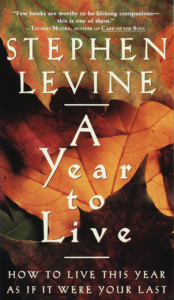 Michael Kaplan, community engagement director for Transitions-Mental Health Association: “A Year to Live by Stephen Levine. My father died last summer, and I am taking a full-year course based on this book. It is beautiful and terribly challenging—and ultimately aligns with the grief work I want to do right now. Bottom line: it will help you face your own mortality and live your current days to their fullest.”
Michael Kaplan, community engagement director for Transitions-Mental Health Association: “A Year to Live by Stephen Levine. My father died last summer, and I am taking a full-year course based on this book. It is beautiful and terribly challenging—and ultimately aligns with the grief work I want to do right now. Bottom line: it will help you face your own mortality and live your current days to their fullest.”
Robyn O’Leary, temple administrator for Congregation Beth David: “I just finished one of the most interesting books I have ever read: How High We Go in the Dark by Sequoia Nagamatsu. It’s a dystopian sci-fiction with elements of magical realism and spiritual philosophy. What I loved about the book was Nagamatsu’s ability to weave together interesting characters and a complex story line throughout a novel that reads like a series of short stories. Unlike most plots, I had no idea where the story was going next, or who would appear in the next chapter and yet I never felt lost or felt unconnected to the characters.”
Jeanette Trompeter, public information specialist with the County of San Luis Obispo: “I honestly don’t remember who recommended it to me but I LOVED it. The Love of My Life by Rosie Walsh. I loved it because it was a love story, a mystery, a story about regrets and redemption. Just a great read that was anything but predictable.”
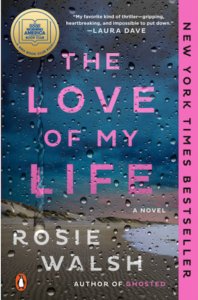 Jim Gregory, author and historian: “The Earth Is All That Lasts, by Mark Lee Gardner. This is a stunning dual biography of the Lakota leaders Sitting Bull and Crazy Horse. It’s a richly anecdotal account of two men who were marked, without contradiction, by both their fearlessness in battle and their seemingly effortless generosity, notably toward widows and orphans, whose numbers increased so rapidly among their people during Western expansion.”
Jim Gregory, author and historian: “The Earth Is All That Lasts, by Mark Lee Gardner. This is a stunning dual biography of the Lakota leaders Sitting Bull and Crazy Horse. It’s a richly anecdotal account of two men who were marked, without contradiction, by both their fearlessness in battle and their seemingly effortless generosity, notably toward widows and orphans, whose numbers increased so rapidly among their people during Western expansion.”
Erica Crawford, president/CEO of the Morro Bay Chamber of Commerce: “The Buddhist Enneagram:Nine Paths to Warriorship by Susan Piver. I brought this book with me on an overnight trip to Treebones Resort with a girlfriend. She brought trashy magazines replete with personality quizzes and fashion advice and I brought this—a fun, engaging, and light-hearted tool for introspection. It was a perfect balance. I like most how the enneagram tool has mysterious origins yet has sustained over time and what I like most about this book is the freedom it gives the reader to investigate personality blind spots and subtleties to improve relationships.”
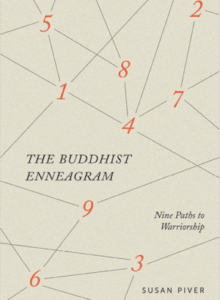 Pete Howard, rock ‘n’ roll memorabilia collector: “I’m currently reading Like a Rolling Stone – A Memoir by Jann S. Wenner, the founder, owner, publisher, and editor of Rolling Stone magazine. I’m thoroughly enjoying the book, because it’s jam-packed with music industry stories and celebrity encounters. Wenner truly rose to the highest strata of high society in New York after he moved the magazine there, counting among his best friends Jackie Kennedy and Mick Jagger.”
Pete Howard, rock ‘n’ roll memorabilia collector: “I’m currently reading Like a Rolling Stone – A Memoir by Jann S. Wenner, the founder, owner, publisher, and editor of Rolling Stone magazine. I’m thoroughly enjoying the book, because it’s jam-packed with music industry stories and celebrity encounters. Wenner truly rose to the highest strata of high society in New York after he moved the magazine there, counting among his best friends Jackie Kennedy and Mick Jagger.”
Heather Hoff, co-founder of Mothers for Nuclear Power: “I’ll be reading The Firecracker Boys by Dan O’Neill next. I’m trying to learn/understand more about environmentalism in relation to ideas about humanity. Are we protecting the planet to raise human quality of life, or do we picture people as a scourge? So much of our modern thinking and policy involves a balance between these two ideas, but it’s not one or the other.”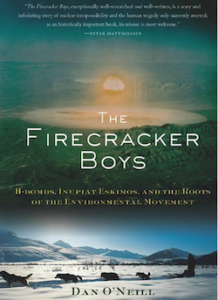
Dawn Ortiz Legg, SLO County Supervisor: “The Death of Learning by John Agresto. He argues liberal arts education has been maligned and miscategorized: ‘Liberal arts education makes women and men free, free to make independence of thought and imagination, to become a person who thinks for themself, rather than the group thinking happening in too many places.’ It’s a history of liberal arts education and how we are failing our kids today.”
John Summer, retired journalist: “Recessional, The Death of Free Speech and the Cost of a Free Lunch by David Mamet, a noted playwright and former left thinker. Mamet discovers he’s been living in ‘opposite day.’ A wonderful read.”
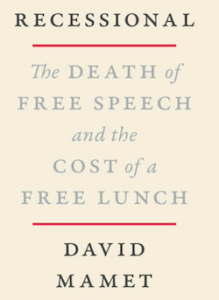 Brynn Albanese, violinist: “The Art of Being a Healing Presence by James E. Miller and Susan Cutshall. This little book of just 80 pages shows how a difference can be made in the lives of others by learning to be present in a way that is healing, nurturing, and potentially even transforming. Some of the steps include: opening oneself, making the intention, preparing a space, honoring the other, offering what you have to give, receiving the gifts that come, and living a life of wholeness and balance. The book includes whole pages of quotations interspersed throughout. It is my ‘go to’ book for the transformative work that I do and I read a few pages every day. Feels so good!”
Brynn Albanese, violinist: “The Art of Being a Healing Presence by James E. Miller and Susan Cutshall. This little book of just 80 pages shows how a difference can be made in the lives of others by learning to be present in a way that is healing, nurturing, and potentially even transforming. Some of the steps include: opening oneself, making the intention, preparing a space, honoring the other, offering what you have to give, receiving the gifts that come, and living a life of wholeness and balance. The book includes whole pages of quotations interspersed throughout. It is my ‘go to’ book for the transformative work that I do and I read a few pages every day. Feels so good!”
John Lindsey, meteorologist: “We are traveling to the British Isles in May, and I wanted to learn the history of the people who were also my ancestors. Who Were the Celts? by Kevin Duffy explores the history and culture of the ancient Celtic people. Duffy discusses the origins of the Celts, their migrations, and their impact on European history. He also examines their social and political structures, religion, art, and language. Through his analysis, Duffy reveals that the Celts were not a homogeneous group but a collection of distinct and complex societies with unique traditions and identities.”
Emily Francis, SLO City Councilmember: “One of my resolutions this year was to carve out more time for reading. I’ve been trying to leave my phone downstairs and read in the time before I fall asleep. During COVID, I got in the habit of checking out Kindle books from the library and it’s made a big difference in the quantity of reading and diversity in genre. Candice Millard is one of my favorite authors and she published a new book this last year called River of the Gods: Genius, Courage, and Betrayal in the Search for the Source of the Nile. She has an incredibly cinematic way of writing while using deeply researched academic sourcing.”

Susan Hoffman, ardent bibliophile: “My most recent read is Small Great Things by Jodi Picoult. The first few pages, a prologue without being called that, is about the main character as a child witnessing the home birth of a baby which didn’t survive, and how that influenced her to choose pediatric nursing as a career. I could barely breathe the writing was so tense and good. What most would call a ‘page turner’ and legal drama.”
Ken Hill, retired software engineer: “Braiding Sweetgrass by Robin Wall Kimmerer. A powerful example of how to blend science and the teachings of Indigenous people. Key concepts are the necessity for reciprocity and gratitude for ‘the honorable harvest’ that we take from the Earth. Just a beautiful book.”
Eldonna Edwards, author: “Breathing Lake Superior by Ron Rindo. Having been a preacher’s kid growing up in brutal Midwestern winters, I was immediately drawn into the poetic narrative of a family’s loss and the stunning consequences of a father’s unraveling psyche. Five enthusiastic stars!”
Colleen Gnos, artist/musician: “The book I just finished may be something that could benefit others; it’s called Burnout: The Secret to Unlocking the Stress Cycle by Emily and Amelia Nagoski. It’s a very easy read, and confronts the big and small ideas on why women are burned out and how to get yourself out of burnout. Currently, I’m reading The Hero with 1,000 Faces by Joseph Campbell. I tried to read this when I was in college and just wasn’t ready for it (I was a quasi-atheist).”
Dave Pier, executive director of the Clark Center: “The First 90 Days: Proven Strategies for Getting Up to Speed Faster and Smarter by Michael D. Watkins. I picked this up at a meeting of the San Luis Obispo County Arts Coalition where India D’Avignon had brought along some of her old nonprofit management books to give away at the meeting. Of course, I was already past 90 days at my new position at the Clark Center, but it was still a useful book to reflect on how things are going.”
